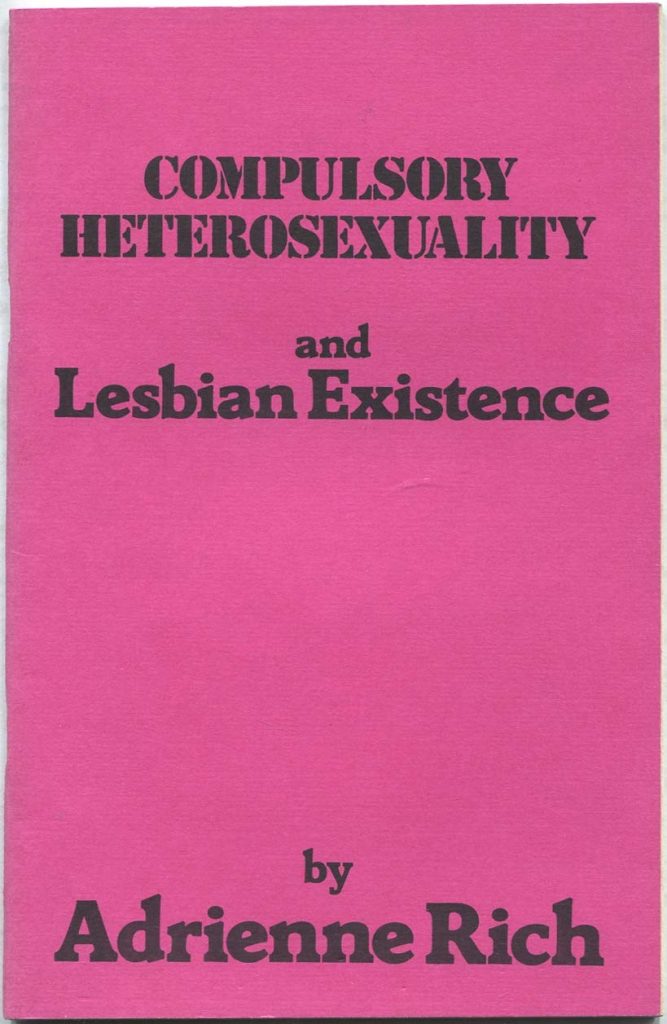Queer and Transgender Politics
Alli Armijo // Blog Writer
In 2008, the City University of New York published a magazine issue composed of essays from different academics about gender essentialism in regards to transgender students attending a women’s college. Each essay creates a new avenue for queer and trans dialogue, offering unique perspectives on gender and how it interacts with society and politics. Aside from the subject matter, what drew me to this paper was the thoughtful prose. Each essay approaches its particular subject with informative syntax that does not alienate an audience—something important to have when allowing all readers to follow along without risk of exclusion or guilt.

One of my favorite essays from this issue was “Compulsory Gender and Transgender Existence: Adrienne Rich’s Queer Possibility.” Written by critically acclaimed researchers C. L. Cole and Shannon L. C. Cate, the essay responds to Adrienne Rich’s article titled, “Compulsory Heterosexuality and Lesbian Existence,” by revisiting the subject through a trans perspective. The essay begins by addressing and analyzing Rich’s essay, explaining the effects of heterosexuality as a tool of the patriarchy to reproduce traditionally ‘masculine’ and ‘feminine’ values. After this introduction, Cole and Cate transition to queer gender theory, emphasizing the absurdity of a static, male/female binary system. However, instead of criticizing the persistence of such an invalid social system, the authors discuss Rich’s alternative: male-identification. As they explain, male-identification is a sociopolitical idea that neglects queer, specifically lesbian, experience and instead focuses on practices that reproduce heteronormative ideals. The queer and trans communities come into Cole and Cate’s argument after their explanation of male-identification and the performance side of gender and desire, debunking stereotypical portrayals of LGBTQIA+ individuals. Some of the examples the authors present focus specifically on lesbians, and how femme and butch lesbians are received differently. They are considered to have different intentions with their appearance, even though this presumed distinction is solely rooted in prejudice and discomfort.
However, the most compelling part of the essay, in my opinion, was in the final two paragraphs. Both authors introduced Susan Stryker’s essay, “Transgender History, Homonormativity, and Disciplinarity.” This section switches gears within gender essentialism to focus on how the acronym LGBTQIA+ is marginalizing in itself, as people who identify as trans and a lesbian, for example, feel forced to choose one label. Thus, the acronym assumes that each category (each letter) holds a distinct place, isolated from the others, making it difficult to identify with multiple groups. However, this should not be the case. Coined the transgender continuum, the authors conclude their argument by explaining how this marginalization reflects the dangers of a sexual binary system, as well as an exclusive, seemingly contradicting standard for transgender individuals.
This essay is just one of many that challenges commonplace social and political practices, opening up readers to the dangers of a complacent acceptance of the perpetuated practices of our heteronormative society. Syntactically, the magazine is insightful and thorough, offering additional sources and notes on each topic for continued research. Although it is academic in terms of prose and diction, it discusses each topic with a certain comfortability that allows readers to approach the material holistically.
